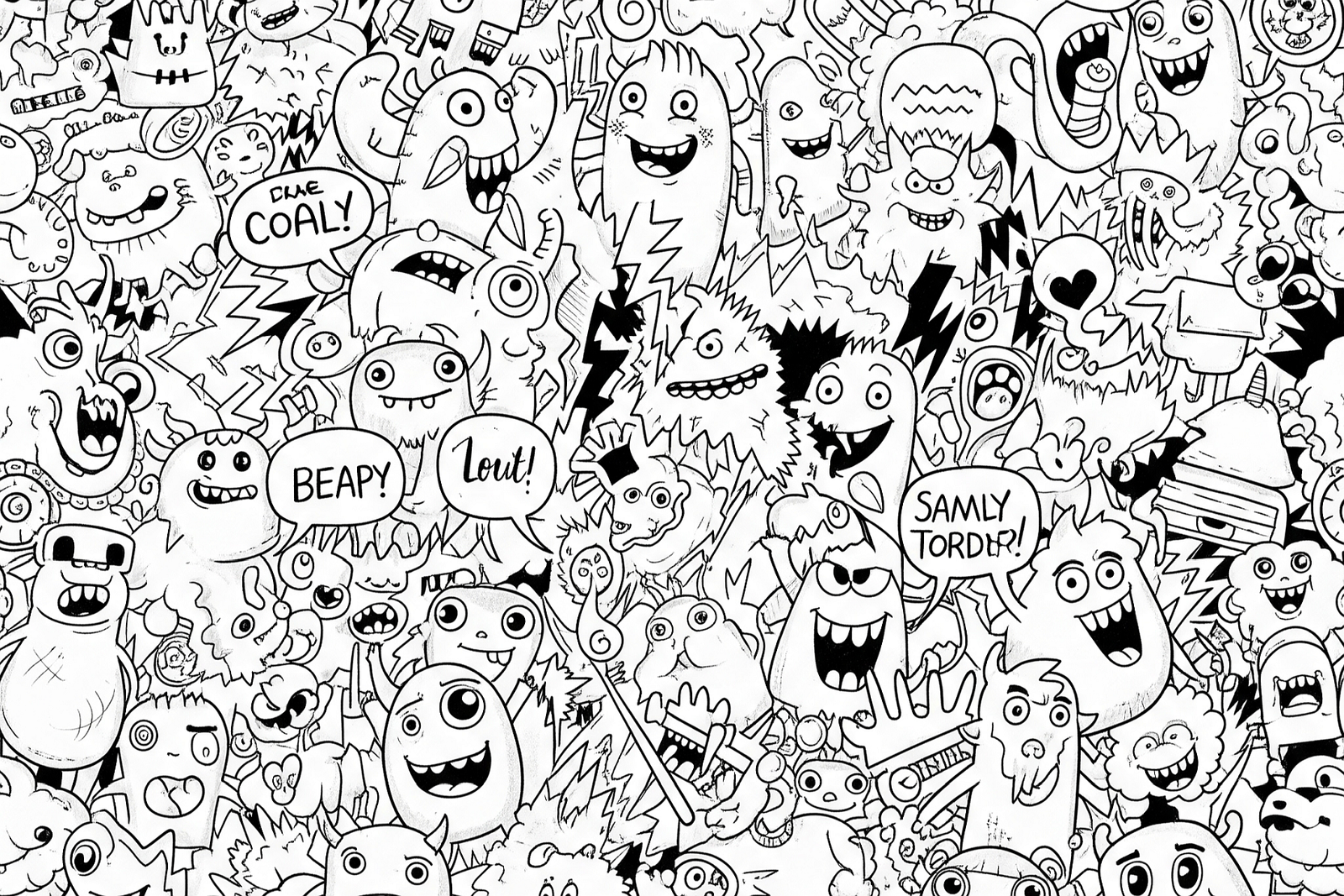An aesthetic reflecting spontaneous creativity, blending childlike playfulness with graphic intensity.
🧭 Origin
Doodle Art evolved from informal sketching and margin scribbles into a recognized aesthetic in street culture, fashion, and visual communication. It reflects spontaneous creativity — blending childlike playfulness with graphic intensity.
💡 Inspirations
Draws from notebook sketches, graffiti characters, cartoons, outsider art, zines, and the DIY spirit. Heavily influenced by artists like Keith Haring and Jean-Michel Basquiat, as well as pop culture and street expression.
🎨 Color Palette
Black & white is common, but full-color variants feature bold primaries and high contrast (pure black, paper white, pop yellow, hot pink).
🖌️ Texture / Technique
Freehand linework — squiggly, imperfect, overlapping. Often marker- or pen-based, with dense repetition, scattered characters, text bubbles, and layered visual noise. Surfaces feel chaotic, raw, and fun.
🌀 Shapes & Forms
Simplified figures, talking creatures, floating objects, expressive lines, and random symbols. Compositions can be dense and all-over, with no clear focal point — more like a stream of visual thought.
🌙 Mood / Atmosphere
Playful, spontaneous, humorous, sometimes manic or rebellious. Feels like a creative brain dump — unfiltered and alive with energy.
🧩 Possible Applications
Great for streetwear, skateboard art, children’s books, creative branding, digital stickers, editorial design, and any project that thrives on personality and chaos.
🧠 Generative Potential
Use prompts such as “black-and-white doodle collage with floating cartoon faces and text bubbles” or “scribbled marker artwork with random creatures and chaotic layout.” Best for fast, expressive, character-based outputs.
💬 Prompt Example
“A black-and-white doodle composition filled with playful monsters, speech bubbles, lightning bolts, scribbles, random symbols, floating faces, and messy marker textures in a dense, chaotic layout.”
